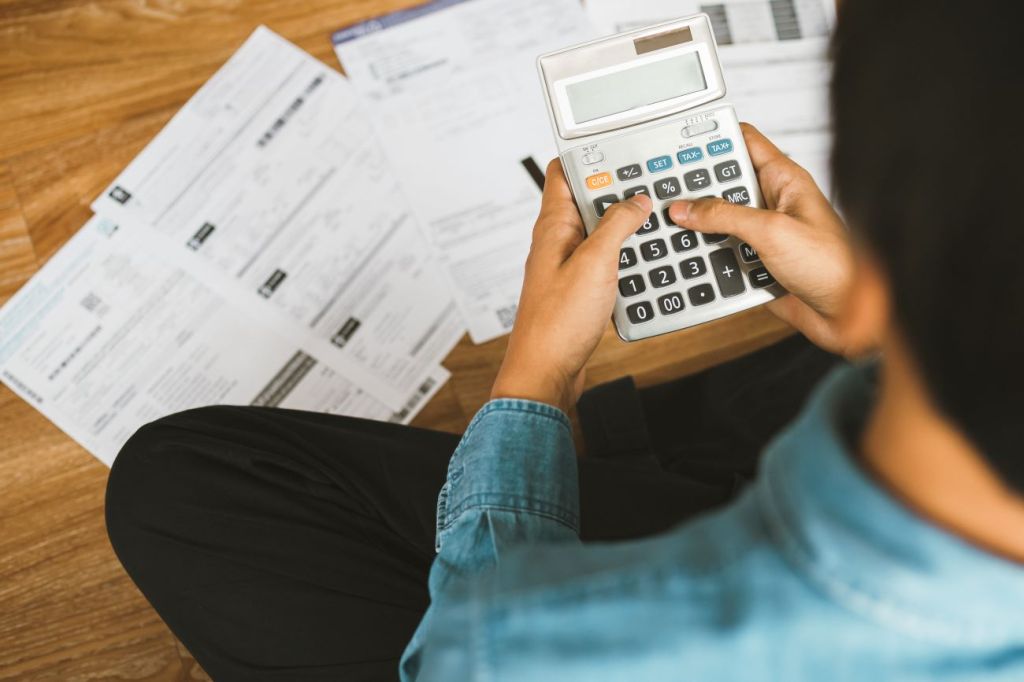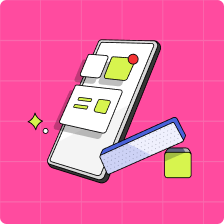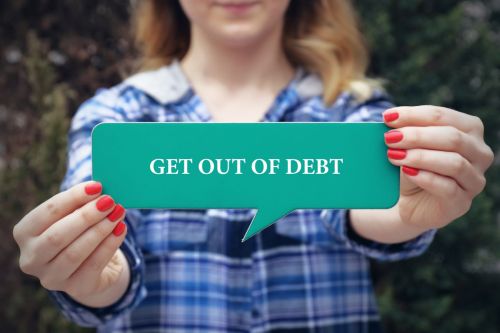So you’ve taught your kid how to create a budget, save money, and spend it wisely. Yay, you! But what about dealing with debt? We’re not talking about borrowing from the Bank of Mom and Dad. (One can dream, right?) Before you know it, your teen may be racking up their own bills from student loans, car loans, credit cards, and other life necessities.
No one likes being in debt, but it’s possible to take control of it. In this article, we’ll cover how debt can quickly accumulate and a few ways parents can help teens learn how to tackle it quickly and efficiently.
Key takeaways
- Encourage your kids to have a handle on what they owe by making a list of their debts and the accompanying interest rates.
- The “debt avalanche” and “debt snowball” methods are two types of accelerated-debt-repayment methods. The former works by paying the highest-interest debts first and the latter tackles the smallest debts first.
- Make lump-sum payments and pay more than the minimum to get rid of debt faster.
- Autopay can help your teens stay on top of payments and avoid hurting their credit score.
- Let your kids know that if they ever struggle with debt, they can ask for help. There are ways to consolidate and refinance loans to lower the interest rates and make debt easier to pay off.

Get real about your debt
Having debt is one of those times when your kid learns that ignoring a problem will only make it worse. Explain that while debt might seem overwhelming, the first step to paying it off is being aware of exactly how much they owe and how much the interest is adding up.
To do this, they should list their debts (for example, student loans, credit card balances, car loans, and so on), what they owe to whom, and how much. They should also include the minimum payments and interest rates and calculate what is due when. (You’ll see why in the next section.)
As uncomfortable as this reality check may be, from this point on, teens will better understand how they have to adjust their spending so they can make their payments and become debt-free.
Devise a strategy to pay off your debts
There are various strategies for paying off debt fast. Three of the most popular debt-repayment methods are:
Debt avalanche method
For those who feel like they’re being buried by an “avalanche” of debt, this debt-relief strategy can be the most efficient. With the debt avalanche method, people prioritize paying off their highest-interest debt first (for example, a $5,000 balance on a credit card with a high interest rate of 19.99 per cent) and then gradually work their way down to paying off the lowest-interest debt. Any extra money in their budget goes toward that prioritized debt while they keep up at least the minimum monthly payments on the rest. While this method results in paying less money overall, it’s not necessarily the quickest way for a person to free themselves of multiple debts.
Debt snowball method
With the debt snowball method, people focus on their smallest debts (not to be confused with the lowest-interest debts) first and then work their way up to the biggest debts, regardless of the interest rate. Say your teen’s smallest debt is a $500 personal line of credit with a relatively low interest rate of 6 per cent. Any extra money in the budget goes toward paying that off before the others. The thinking here is that knocking off smaller amounts of debt faster motivates people to pay more back over time.
50/30/20 rule
The 50/30/20 rule is one of the most popular guiding principles when it comes to managing money in general. People divide their income and put 50 per cent toward needs (think rent, groceries, utility bills), 30 per cent toward wants (such as restaurants, new clothes, streaming subscriptions) and 20 per cent toward savings or debt repayment. (Typically, most people try to pay down debt before saving.)

Establish a budget to pay down debt
Creating a budget is important for any financial plan (and adulting in general), but it’s absolutely crucial for paying down debt. Help your teen understand how much debt they can afford to pay down every month. To get to this number, they’ll need to make a budget that tracks all their income and actual spending—not just what they think they should be spending. (Our simple step-by-step guide to budgeting is an easy way to learn how.)
Most people are pretty shocked by what they find out about their spending habits (and how much those daily fancy coffees add up to), but once they identify areas where they can cut back, they can put more money toward paying down debt.
Read more: What is a zero-based budget?
Tips to pay down debts faster
In addition to the debt avalanche and snowball strategies for debt repayment, here are some general tips to help your teen pay down debts and limit hefty interest charges:
Pay more than the minimum
This one should go without saying, but we’ll say it anyway because it’s so important: Make sure that your teen is always paying more than the minimum monthly payments of debt—as much as they can afford. (If they’re following the avalanche or snowball method and targeting one main debt at a time, then it’s fine to only pay the minimum for the others. It’s all part of the plan.)
Generally, if they only make the minimum debt payments each month, it can literally take decades to pay off a balance on a credit card. That’s because the majority of the minimum payment goes toward paying interest and other fees, and what’s left over is applied to reducing the principal—a.k.a., the amount they actually borrowed.
Make lump-sum payments
As well as routinely paying more than the minimum, your teen should get into the habit of making lump-sum payments whenever they have unexpected cash—from gifts and payments for odd jobs to tax returns or bonuses. Lump-sum payments are necessary to reduce debt more quickly and save money on interest.
Try using a financial calculator to show your teen how far an extra $100 a month toward debt repayment can go.
Enrol in autopay
In addition to making lump-sum payments and always paying more than the minimum, your teen should speak with their bank or financial institution about setting up automatic withdrawals for bill payments. This not only saves time but helps them avoid late fees or credit score penalties for missing minimum payment due dates.
Read Credit report 101: A guide for parents and teens to learn more about credit scores.
Restructuring debt
Depending on the types of debt your teen has, they may be paying more interest than they have to. There are various ways to refinance or restructure personal debt to lower interest costs and get out of debt faster.
For example, they may be able to switch their high-interest credit card debt to a card with a lower rate. If they have multiple cards and loans, they may also be able to consolidate their debts by combining them under a new line of credit or a loan. Booking a meeting with a credit specialist at your teen’s financial institution can help them figure out what solution is best for them.

Find ways to earn additional income
For some people, the best way to pay off debt is to make more money. Getting another job during the evenings or on weekends and putting all that extra income toward paying down debt could make more sense to them than living frugally. It depends on their personality and how much they value their free time.
But there are other clever ways to have their cake and eat it, too. Say they want to go on vacation but also need to make extra money. Why not go camping with their bestie (cheap and cheerful!) while subletting their apartment (if their lease allows it)?
Read more: 14 best part-time jobs for teens.
Ask for help
If your teen is struggling to pay off debt, especially high-interest credit cards and other loans, the sooner they ask for help the better. Student-loan programs, major credit card companies and financial institutions may offer financial-relief programs that waive late fees, lower interest rates, and help their customers come up with alternative payment plans.
We’re lucky that in Canada there are also numerous not-for-profit credit counsellors who can help people become debt-free. But make sure to find an accredited organization (one that’s been evaluated by a third party and meets a high standard), and be aware that some for-profit companies that offer to help pay off debt or repair credit ratings may be misleading customers.
How debt can affect your credit score
Carrying a lot of debt, especially high-interest credit card balances, can hurt your teen’s credit rating and their ability to qualify for new credit cards, loans, increased credit limits, and lower interest rates in the future.
A credit rating or score is a three-digit number that tells a credit bureau how well a person manages credit and how risky it might be for a credit card company or institution to lend them money, rent them an apartment, or even extend a phone plan to them. Credit scores generally range from a value of 300 to 900.
In Canada, anything over 660 is considered good. Your payment history is the biggest factor that affects your credit score, making up 35 per cent of how your rating is calculated. Surprisingly, even a single missed bill payment can lower someone’s credit score by more than 100 points. On the upside, paying off debt could improve a credit score significantly.

How to prevent your teen from getting into debt
Let’s be real: No one likes being in debt. The thought of owing money is a burden that can weigh on your kid’s mental health and limit the choices they can make to improve their quality of life. Wouldn’t it be great if your teen could sidestep debt? Talking to your child about budgeting and managing money from an early age is the most important first step in helping them avoid having to carry debt in the first place. To increase their chances of financial stability, they should:
Build an emergency fund
Just like dropping coins in a piggy bank became a habit for your kid when they were younger, your teen should routinely put money aside for unexpected expenses—anything from a car breakdown to a sudden job loss to a surprise vet visit for the cat they adopted (and insisted they could take full responsibility for, medical bills and all).
It’s recommended to have at least three to six months’ worth of expenses (here’s where your budget comes in handy again) saved in an emergency fund to cover monthly costs in case of job loss or other financial strain.
Learn more: Emergency funds explained for teens.
Pay student loans before they start to charge interest
According to Statistics Canada, the average Canadian university graduate finishes school with $28,000 in student debt. Most people take years to pay back student loans and start just as they’re getting their first professional jobs and struggling with other responsibilities like living on their own and covering all their basic expenses for the first time.
There’s a non-repayment grace period of six months from the time students finish their last school term, but interest on student loans starts to accumulate as soon as that period ends. If your teen is financially able to, they should pay student loans before interest starts to stack up. In all likelihood, though, it will take longer to pay off a student loan than six months, so encourage your teen to make as many payments as possible during that grace period.

Take a gap year before starting post-secondary studies
There are many emotional benefits to taking a gap year after high school, but it makes sense for financial reasons, too. Post-secondary education is expensive (see daunting debt figures above), and taking a year off to work, make money, and build up their resumé in the process could be a smart move for your teen. By taking a gap year, they may be able to begin their college or university career with no need to even apply for student loans to begin with.
Being debt-free is key to having financial freedom and independence. Help prevent your kid from learning what crushing debt feels like the hard way by practicing money management skills with them now—while you still have the tiniest bit of influence over their thinking. A great way to start is by downloading the Mydoh app, which is designed to give teens real-world experience of making their own money, spending it, and saving it responsibly.
Download Mydoh and help build the foundation of financial literacy for your kids and teenagers.
This article offers general information only and is not intended as legal, financial or other professional advice. A professional advisor should be consulted regarding your specific situation. While the information presented is believed to be factual and current, its accuracy is not guaranteed and it should not be regarded as a complete analysis of the subjects discussed. All expressions of opinion reflect the judgment of the author(s) as of the date of publication and are subject to change. No endorsement of any third parties or their advice, opinions, information, products or services is expressly given or implied by Royal Bank of Canada or its affiliates.












